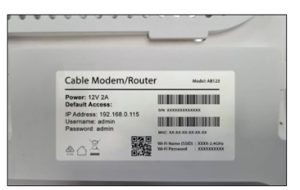In this guide, I’ll be explaining to you everything you’ll ever need to know about logging into 192.168.0.115, default login credentials, tweaking your Wi-Fi settings, and fixing common issues.
192.168.0.115 is a private IPv4 address commonly used as a default gateway for certain routers and local area networks (LANs). In this case, users have to enter http://192.168.0.115 in the browser and log in. It lets you into the router’s configuration, deepen what is possible to configure regarding internet connection, security, wireless networks, etc. This IP address is not exposed to the public internet, but only available within your local network. If your router is using this IP, you can log in to your router with the help of this URL so that you can configure your network in your own way.

How to Log In to 192.168.0.115
1.Connect to Your Network
- Make sure your device is connected to the router using an Ethernet cable or Wi-Fi.
2. Open a Web Browser
- Open a modern web browser like Chrome, Firefox, Edge, or Safari.
3. Enter the IP Address
- In your browser’s address bar, enter http://192.168.0.115 then press Enter.
4. Enter Username and Password
- You’ll receive a prompt to enter your username and password. If you have not modified them before, the default credentials (see below) should be kept.
5. Access the Admin Panel
- After successfully logging in, you will be redirected to the router’s interface where you can customise all these settings.
Default Username and Password for 192.168.0.115
| Router Brand | Username | Password |
|---|---|---|
| TP-Link | admin | admin |
| D-Link | admin | admin |
| Netgear | admin | password |
| Linksys | admin | admin |
If the above combinations don’t work, check the following
Router Sticker
- Many routers feature a sticker on the bottom, back or side with default login information.
User Manual
- Please see the quick installation guide or user manual that came with your router.
Manufacturer’s Website
- Check the manufacturer’s website of your router for support pages.
If you have changed your login credentials before but forgot them, you might have to reset your router back to factory defaults (troubleshooting section below).
How to Change Your Wi-Fi Password and Network Name
- Access the Router Dashboard as explained in the above steps.
- Go to Wireless settings:
- Look for sections like “Wireless,” “Wi-Fi Settings” or “Network.”
- Edit SSID (Network Name Search for the box that says something like “SSID” or “Network Name” and replace it with a name you’d like.
- Change Wi-Fi Password
- Find the “Security Key,” “Password” or “Pre-Shared Key” text box. Type in a strong password.
- Save Changes
- Click “Apply” or “Save.” The router will reboot to take effect.
- Reconnect Devices
- Once updated, reattach all devices with your new Wi-Fi name and password.
Troubleshooting Issues with 192.168.0.115 IP Address
1.Page not loading / can’t access admin panel
- Verify the IP Address: Confirm the correct IP address is being entered (including no spaces or other characters) http://192.168.0.115 There may be an issue with how you entered the address.
- Chace Other Browsers — Sometimes browsers save old data in their cache. Try opening the page in an incognito window or a different browser.
- Use HTTPS: A few routers need to be visited over a secure connection. Try https://192.168.0.115.
- Check Network Connection: Make sure your device is connected to the router.
- IP Conflict: Could mean another device has the same IP. Look at your router’s DHCP settings or power-cycle the router.
2. Forgotten Username or Password
- Reset Router: Hold down the little reset button in the back of the router for 10–15 seconds with a paperclip or pen (the lights should start flashing). This will be a factory reset with default login details.
- Note: A router reset will restore it to its factory settings, which means you’ll also lose any custom settings, including your Wi-Fi network name and password.
3. Slow Interface or Lagging
- Clear Browser’s Cache: Cached files of browser could be the reason of failure in loading the router.
- Update the Firmware: Visit the manufacturer’s web site.
- Factory Reset: In case the above steps did not work, Floor reset the router to attempt at fixing the performance issue.
4. Router Not Responding
- Reboot the Router: Remove the power cord for 30 seconds, and then plug it back in.
- Check Cabling: All cabling should be connected securely.
- Seek Support: If all else fails, reach out to your ISP or router vendor to ask for help.
